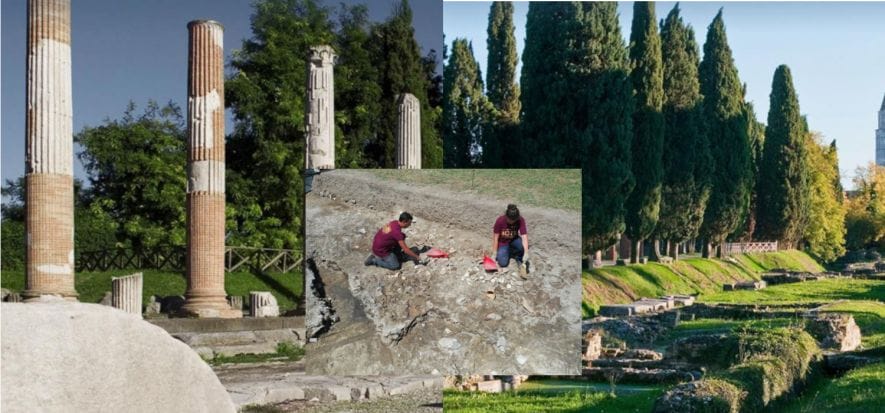They have recently discovered, in Aquileia’s archaeological site, 100 urns for alum transportation. In the ancient Roman colony, situated in Friuli, archaeologists have been carrying out excavations in the subsoil for nine years. In the last days, while celebrating the anniversary of the city foundation, which dates back to 2,200 years ago, they detected some relevant signs of the past times. More specifically, we are talking about several fragments of urns: according to experts, they made use of them to transport alum, once used for leather tanning.
The importance of such discovery
The discovery may well confirm that Aquileia was a landmark for alum trade in the route connecting Europe to the East. The area, where researchers from Ca’ Foscari have been carrying out excavations and research since 2010, is a state-owned site situated on the eastern bank of the old river Natiso cum Turro, opposite the monumental docks of Aquileia’s river harbour. One can see, in the area, a rather complicated mix of environmental modifications, strictly related to the old river flow, alongside a steady interaction between men and environment, which has been going on since the first century B.C. – early first century A.D. until the sixth century A.D. at least.
They filled a gap
“This is absolutely one of the most meaningful discovery in all western Roman society: thanks to its paramount importance, it successfully fills a documentary gap in Aquileia’s records. In fact, the discovery made by the Ca’ Foscari team of researchers, in 2019, shows that Aquileia was a landmark for alum trade routes and transport of products from Northern Adriatic Sea towards the Po valley and north-west provinces”. Such is the forensic analysis provided by Daniela Cottica, campaign manager and Professor of Classical Archaeology and Archaeology of Roman Provinces at the department of Humanistic Studies of Ca’ Foscari University of Venice.
The finding
Despite their being fragmentary (over 6,000 fragments), urns found by the Ca’ Foscari team enabled researchers to put together more than 100 items (whose capacity ranges from 15 to 30 litres, with a majority of the latter). They come from two different provision areas set in the Roman age: Lipari, together with surrounding Aeolian Islands, and the isle of Milos, in the Aegean Sea. As widely attested by ancient reference sources, they used and sold alum coming from Lipari Islands. As well, they used to sell alum coming from Melo (nowadays Milos), which Pliny called “melinum”.











